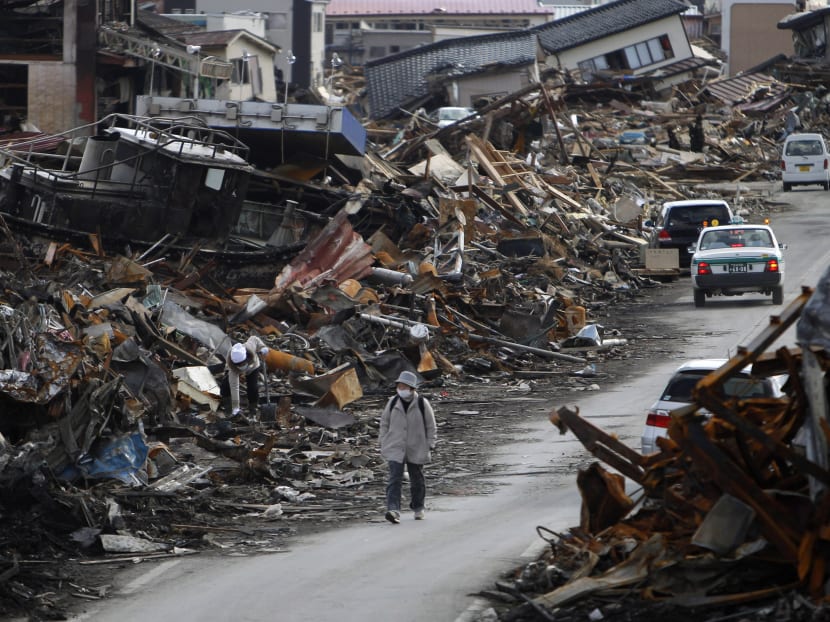Thousands still living in shelters five years after Japan quake
IWAKI (Japan) — Thousands of survivors are still living in evacuation shelters in Japan, five years after a massive earthquake unleashed a giant tsunami and triggered a nuclear meltdown in Fukushima.

In this March 23, 2011 file photo, a resident walks between the rubble caused by the March 11 tsunami at Kesennuma, Miyagi Prefecture, northern Japan. Photo: AP
IWAKI (Japan) — Thousands of survivors are still living in evacuation shelters in Japan, five years after a massive earthquake unleashed a giant tsunami and triggered a nuclear meltdown in Fukushima.
At a peak time there were 470,000 people, from the three prefectures that took the brunt of the tsunami, living in evacuation shelters for the homeless. That figure has dropped by only 38 per cent since.
A nationwide survey conducted once every five years showed that the hardest hit areas lost 15.6 percent of their population in the nuclear disaster. But in Iwaki City in the southern part of Fukushima, the population has now grown for the first time in two decades.
Iwaki has been accepting evacuees from radiation contaminated areas, including Etsuko Nomura.
She is originally from Hirono, also in Fukushima prefecture, and even though the town has lifted its evacuation ban, she is not willing to go back just yet.
“There are some going home. But in Hirono there are so many construction workers. They are the ones involved in cleaning up the nuclear contamination,” she said.
But the shelter she lives in will shut down next year and soon she and the other 260 temporary residents from Hirono will have no choice but to leave.
In Otsuchi, in Iwate prefecture, there are still many temporary shelters for evacuees, who hope to move on to permanent residences but do not know when.
“The ground is still in the process of being raised, to make it high enough to build our homes on, and make it safe from tsunamis. I don’t know whether that will be completed next year or this year,” said one woman living in a makeshift home.
A more permanent home, but with a requirement to pay rent, is called a disaster recovery residence. Those who are unemployed can rent one for ¥1300 (US$15.85) a month.
“It’s much better than living in a makeshift home. There, it was very windy. Objects flew. Window screens would go flying and the glass easily broke,” said Takato Sato, an Otsuchi resident.
The lucky ones are those who have won a draw to build a house on the raised ground of a shaved mountain top.
That is the case for Washichi Tanaka, whose home and shop were all swept away by the tsunami.
“It’s taken more than a year to secure a housing site. It’s to gain permission from the owner of the mountain. That’s taken another two years. After 3 years, finally it got started. Once it got started, it was fast,” he said.
Mr Washichi’s grandfather lost everything in the 1933 tsunami. But he took just a year to rebuild because there were no restrictions set by the local municipal and the central government.
This time however, the rebuilding is taking longer but the Shinzo Abe government aims to complete building new homes of tsunami victims within three years. CHANNEL NEWSASIA






